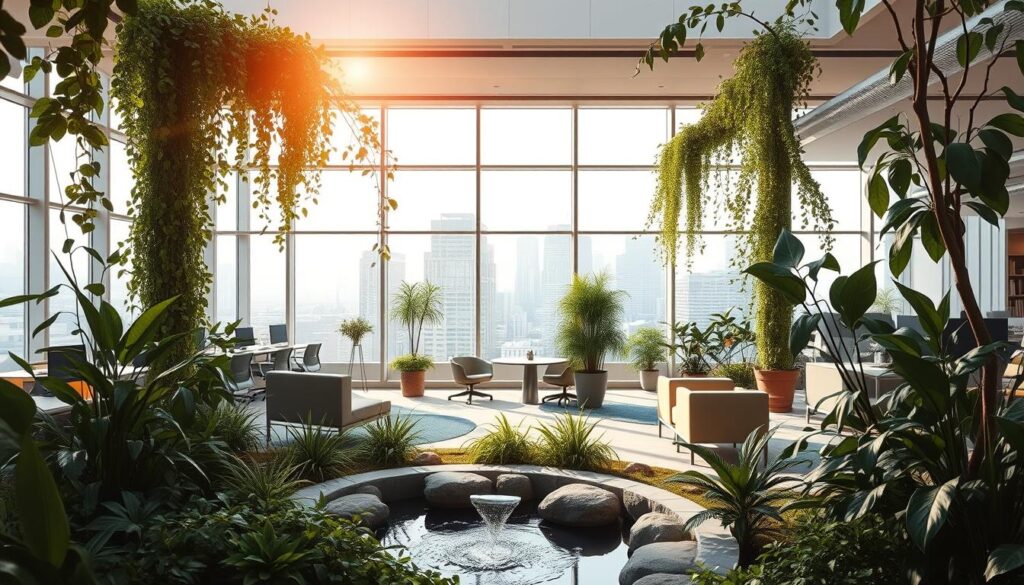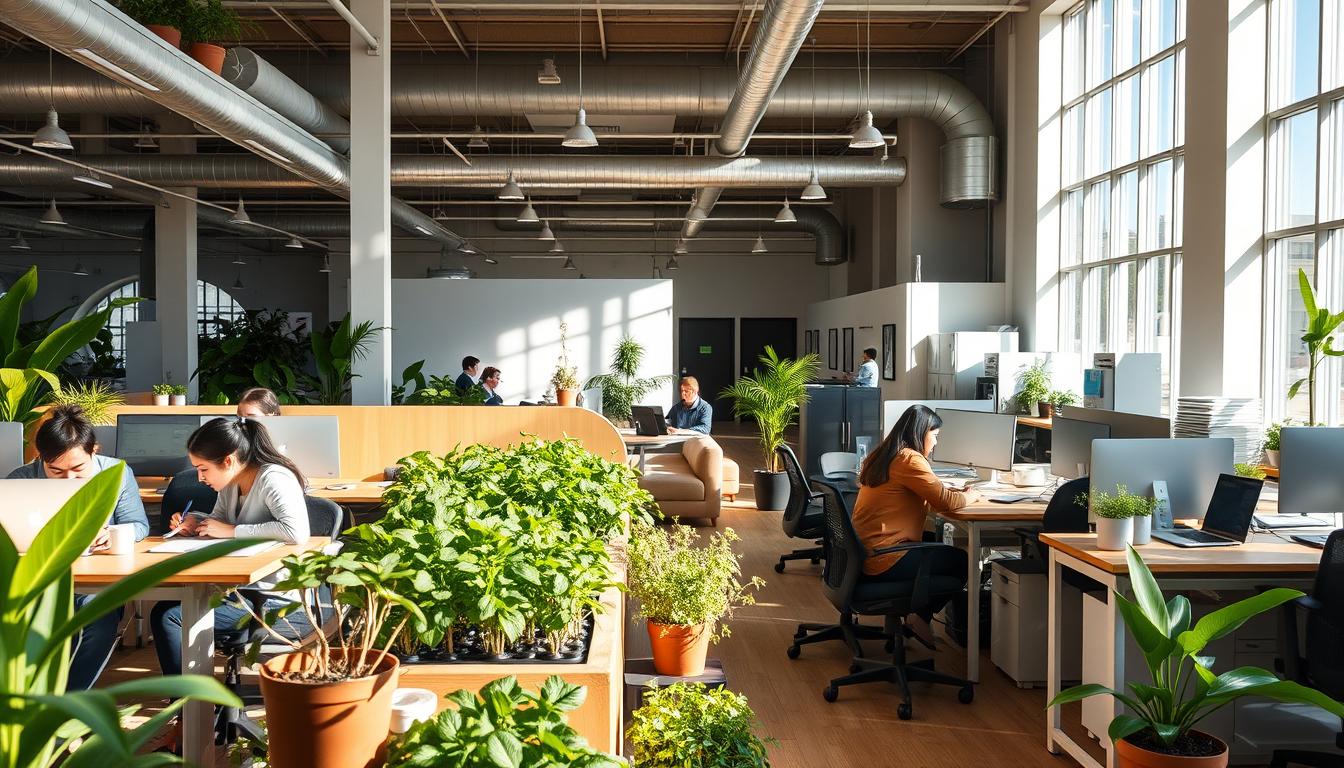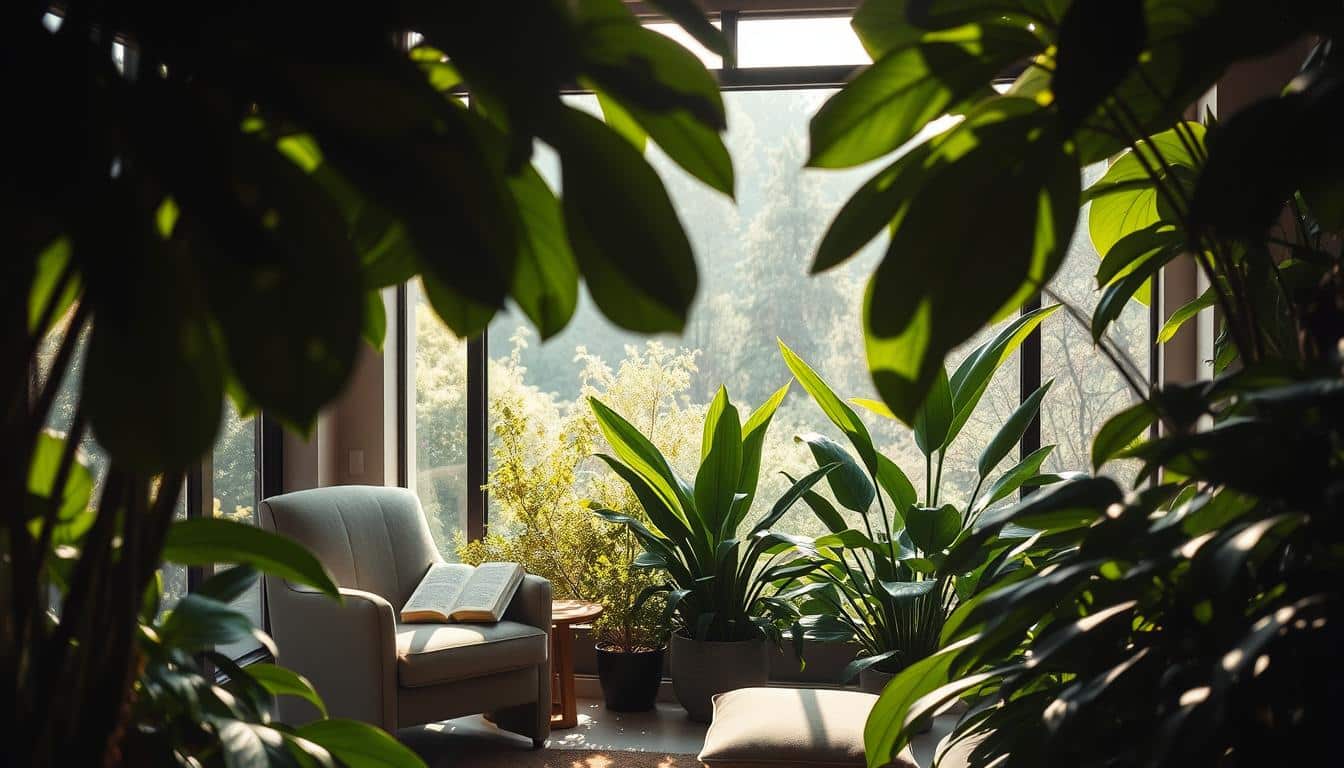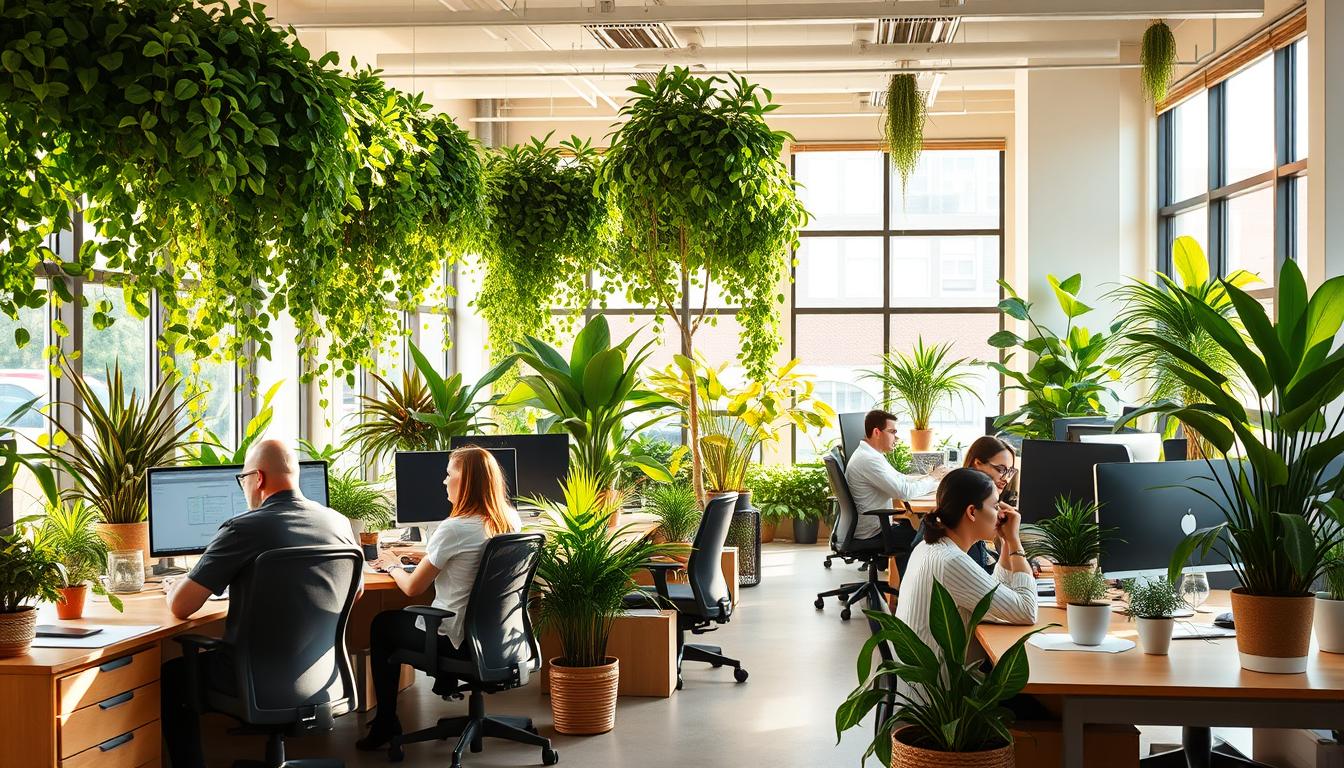The biophilic strategy is changing how we design offices by adding natural elements. This method improves wellness and increases employee productivity and happiness. It connects people to nature, making spaces that boost health, creativity, and teamwork. In today’s world, where keeping employees engaged is key, knowing how to use biophilic design is crucial. It helps make workplaces that energize and inspire everyone.
Understanding Biophilic Design
Biophilia is our natural desire to feel connected to nature. It influences architecture and interior design through biophilic design. This approach aims to create spaces that improve our health and happiness. Edward O. Wilson, a biologist, introduced this concept. He highlighted how important nature is to humans.
Definition and Origins of Biophilia
Biophilia is not just enjoying nature; it’s needing it for our well-being. This idea led to biophilic design. It brings natural elements into buildings to create better, healthier places. People feel and do their best in such environments.
Historical Context of Biophilic Design
The idea of biophilic design goes back to architects like Frank Lloyd Wright in the early 1900s. They aimed to blend buildings with nature, showing the value of connecting with our environment. Since the 1980s, studies have shown how good biophilic design is for office spaces.

The Benefits of a Biophilic Office
Bringing nature into office spaces has many perks for workers’ health and their work output. By adding natural features, companies create a better, lively place to work.
Improved Mental Well-being
Nature in the office makes people feel less stressed and anxious. Studies find that being around greenery lowers cortisol, making us more peaceful. Natural light and plants calm us, improving our mental health.
Enhanced Productivity and Creativity
Natural elements make us more productive and creative. They help our brains work better, leading to new ideas. Plus, light and plants boost our mood and energy, making teamwork better.
Reduced Stress and Absenteeism
A workplace with nature makes stress go down, so people miss less work. It keeps employees healthy and happy. This saves companies money and keeps workers satisfied.
Key Elements of Biophilic Design
Biophilic design uses key elements to create a natural feeling in the office. These elements improve mental health, boost productivity, and connect us to nature.
Natural Light and Its Importance
Natural light is crucial in biophilic design. With windows and skylights, offices get plenty of sunlight. This boosts mood and energy, and cuts down on artificial light.
Use of Indoor Plants
Indoor plants are vital in biophilic design. They make the air cleaner and the office look better. Different plants can make a workplace calmer, helping employees focus and feel at ease.
Incorporation of Natural Materials
Using natural materials like wood, stone, and bamboo helps too. They give offices an earthy vibe. This makes employees feel more at peace and comfortable at work.
Water Features and Acoustics
Water features, such as fountains or ponds, add peaceful sounds. These sounds help lower stress and relax people. It makes the office a quieter place where work gets done easier.
Biophilic Strategy in Office Planning Essentials
Adding a biophilic strategy in office planning means we connect more with nature. It makes the office look better and helps people feel good and work better. Using things that make the inside feel like the outside improves the office vibe a lot.
Creating a Connection to Nature
Seeing the outside is key to feeling linked to nature. Having big windows, glass walls, or places outside to hang out helps. Plus, putting plants or living walls inside brings nature right to where we work. Using natural stuff like wood and stone makes the place calm and welcoming.
Flexibility in Workspaces
It’s important to know that everyone works differently today. Flexible workspaces help people work together or alone, whichever they prefer. They let people find the best spot for relaxing or being creative. This way, the office becomes a place where people like to work, and they might stay longer.
Implementing Biophilic Design in Your Workspace
Adding biophilic design to your workspace needs a step-by-step plan. It lets you slowly add natural features, making the office healthier and more lively. By including employees in these changes, their needs are met. This makes the space welcoming for all.
Practical Steps for Integration
Starting with biophilic design means looking at your office layout first. Find places where you can add nature, like:
- Introducing indoor plants
- Incorporating water features to improve acoustics
- Utilizing natural light to brighten workspaces
Adding these natural elements makes the office more pleasant. It helps employees feel better and work happier.
Involving Employees in Design Choices
It’s important to include employees when adding biophilic design. Ask what they like, making the changes more impactful for everyone. This way, employees take pride in the changes, boosting their acceptance and excitement. It strengthens the sense of community and improves the office culture.
Maximizing Natural Light in Office Spaces
Adding more natural light to office design boosts employee happiness and work output. By placing windows smartly and designing open areas well, companies make positive, energetic spaces. These efforts improve how the office looks and feels.
Strategic Window Placement
Putting windows in the right places can bring in more light. Large windows where employees hang out most let in lots of sunlight, cutting down on the need for fake light. This makes the office feel warmer and connects us to the outside world.
Using Skylights and Open Areas
Skylights are great for extra light without giving up privacy. Offices with skylights get sunlight even in far-off spots. Open spaces let light move around, linking different office parts and boosting natural light.
This better lighting lifts moods, boosts energy, and makes employees feel happier overall.
Choosing the Right Indoor Plants
Choosing suitable indoor plants can make your office both look better and feel fresher. Low-maintenance plants are ideal for work places. They do well even without special care. This means they add beauty without needing a lot of work.
Low-Maintenance Options
Picking plants that are easy to care for makes life simpler and your office nicer. Let’s look at some good choices:
- Snake plants: With their tall leaves, they’re tough and don’t need much water.
- Pothos: This vine grows well even in dim light, making it great for many offices.
- Peace lilies: They have pretty white flowers, clean the air, and are easy to keep healthy.
Impact on Air Quality and Aesthetics
Adding plants indoors improves the air by removing pollutants and adding oxygen. Cleaner air helps employees stay healthy and work better. Also, plants make an office more inviting. They create a relaxing vibe that boosts happiness and creativity. Just by being there, plants make workspaces more enjoyable and motivating.
Utilizing Natural Materials in Office Design
Using natural materials in office design improves the look and feel of the space. These elements bring warmth and a real touch, making the office inviting and boosting productivity. Wood, stone, and bamboo each have unique traits that can change any office.
Types of Natural Materials to Consider
- Wood: Suitable for flooring, furniture, and accents, wood provides a warm and timeless appeal.
- Stone: Often used in countertops and feature walls, stone introduces a touch of elegance and durability.
- Bamboo: This eco-friendly option serves well in furniture and decorative elements, contributing to sustainability.
Benefits of Textures and Colors Found in Nature
Natural materials’ textures and colors can make an office calming. Soft blues and greens help relax, creating a peaceful work environment. Meanwhile, warm colors can make the space welcoming and encourage teamwork.
Varying textures increase sensory experiences, making employees feel more connected to their surroundings. This boosts morale. It also creates a harmonious atmosphere, making work enjoyable.
Conclusion
Using biophilic design in offices is key for better employee health and a more lively work setting. By adding nature into our workspaces, companies not only make their offices look better but also make their staff happier. This method is crucial for building work environments where everyone feels valued and well.
As workplaces evolve, adopting biophilic design helps in two major ways: it makes offices look good and keeps employees healthy and productive. The bond between nature and how we feel and work is deep. So, putting money into biophilic design is a smart choice for a thriving, efficient team.
To sum up, adding natural elements to office spaces is a smart way to focus on employee wellness and increase productivity. This approach helps companies build supportive spaces that make employees happy and successful. In the competitive world of today, these principles are essential for success.



